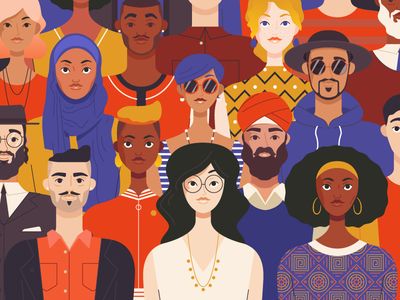By Riya Mohan

“If you look at it closely, every individual is a separate entity, state and
culture. The macro state is a federation of citizens who accept to live under
the same law.” – (Bangambiki Habyarimana, Book of Wisdom)
The acceptance to live under the same ‘nation’ or the ‘idea of nation’ itself is one which disguises the idea of an individual being a “separate entity, state and culture”. While the nation here is a reality, the idea of that nation is merely a constructed notion of that reality.
Don’t we all live in the world of socially constructed realities, where the reality or the comprehensive understanding of it is constructed on the basis of shared assumptions among a particular group or community? People have long debated on the idea of gender being socially constructed, while labelling sex as biological (a reality). Still, recently even patriarchy has been seen as a socially constructed idea which has become so deep-rooted in every society that uprooting it has become extremely difficult. It is so appalling to see how patriarchy isn’t even a reality –without any tangible existence –yet, so powerful. It was so powerful that women from different communities and nations had to come together to fight against this mere ‘idea of reality’ which was being manifested in cruel and brutal ways. The agitations against the Muslim Women’s Bill (1986), the abolition of sati (1987), the white and the black feminist movements in the United States are all efforts to rebel against this idea of patriarchy. Interestingly, what was this ‘patriarchy’, against which many women have rebelled in their own unique ways? And, why had it become so powerful? The very reason why it had become so wearying was due to it not being something tangible and therefore, easily eliminable.
Interestingly, the ideas of gender and patriarchy being socially constructed realities are quite well known. However, rarely does one ponder upon the idea of nationhood and terrorism also being socially constructed.
The word “terrorism” has become extremely popular in the 21st century. Almost every nation and individual use it as part of the mundane vocabulary. We do see the Prime Minister of India, Narendra Modi addressing the entire nation in ‘Mann Ki Baat’ on the issue of terrorism. “Terrorism is the biggest threat to humanity. Not only is it a threat to India but also to countries across the world”. Even India’s former foreign affairs minister, Sushma Swaraj described terrorism as “not bred in some faraway land, but from across our border”. Donald Trump went one step ahead to label Iraq as “Harvard for terrorism”. However, the point here is, what is terrorism? Even though people across the globe, the media, the ministers, etc., all use the term, and even though terrorism is percolating to every nation, there is no internationally agreed definition of terrorism as such.

And, the idea of it also being socially constructed stems from the fact that terrorism doesn’t exist in tangible terms in a way that arms and ammunitions do. In the absence of an internationally agreed definition of terrorism, every nation has constructed the ‘essence’ of it quite differently through shared assumptions. This, then bring us to the point of different nations having their own interpretations and frameworks of what terrorism is and how it works, each of which is reflected in the interpretation given by Narendra Modi which is quite different from that given by Donald Trump. However, the absence of an international definition doesn’t mean that there are no legal definitions for it. The Supreme Court of India for instance, has adopted P. Schmid’s denotation of terrorism as “peacetime equivalents of war times” in Madan Singh vs State of Bihar 2013 case. These legal definitions are essential for the purpose of execution. But, do people really have a definition to live up to? The answer is an absolute ‘no’.
The idea of terrorism being constructed doesn’t mean that it doesn’t exist i.e. it isn’t a reality and merely formulated in the minds of the people. Undeniably, it does exist. The only point of argument is that it isn’t tangible and yet, can manifest in tangible and behavioural ways. Interestingly, the manifestation of this constructed reality is mostly seen in real and violent ways, such as killing a mass of people due to another constructed reality –nationhood.
Nation is a reality, with all its frontiers and boundaries. It is real with states, cities, districts, villages, town and physical features like rivers, mountains, etc. However, nationhood is a construct. It’s in our mind, yet so powerful an idea. It becomes so powerful that it starts dictating the lives of soldiers who feel obliged to die for their country and kill the “enemies”. This social construct has become so powerful in India that standing for the national anthem even in places like cinemas is appropriated to define one’s patriotic identity. It has become so powerful that labelling of left-wing youth as ‘anti- nationals’ has become a mundane thing in India in the current times. However, the debate here isn’t about whether these constructed realities are ethical or not and right or not. What is important to consider here, is how these ideas which people in India and elsewhere constantly live with are merely constructed and yet are so powerful and dictating.
And, as Peter L. Berger and Thomas Luckmann rightly stated in their book, The Social Construction of Reality: A Treatise in the Sociology of Knowledge that “Social order is not part of the “nature of things”, and it cannot be derived from the “laws of nature.” Social order exists only as a product of human activity, so as long as people come up with their own understanding of these ideas of patriarchy, gender, nationhood and terrorism, these ideas will continue to evolve and add different connotations, merely because they are socially constructed.


Great Content, keep up the good work.